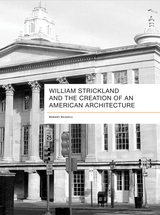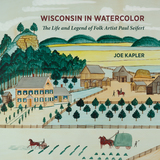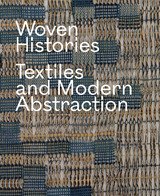4 start with W start with W

William Strickland (1788–1854) was, in his day, among the most notable architects in the United States. An erstwhile student of Benjamin Henry Latrobe and a contemporary of Robert Mills, Strickland first entered the world of architecture at a young age in Philadelphia. But given that many of Strickland’s buildings have not survived, and considering the sparse and dispersed collection of primary sources Strickland left upon his death, little contemporary scholarship has appeared concerning Strickland’s significant contributions to the built environment of the early nineteenth century.
In William Strickland and the Creation of an American Architecture, Robert Russell does much to rectify this underrepresentation of Strickland’s notable architectural contributions in contemporary scholarship. In this first monograph detailing Strickland’s life and works since 1950 Russell examines the architectural production of Strickland during the first half of the nineteenth century.
Russell begins with the well-known Second Bank of the United States (Philadelphia)—the project that launched Strickland onto the national stage—eventually bringing his analysis to the south with an examination of the Tennessee State Capitol Building (Nashville). These two monuments bookended the American Greek Revival of the nineteenth century. Russell’s careful descriptions and insightful analyses of William Strickland’s work highlight the architect’s artistic skills and contributions to American material culture over the course of fifty years.
Ornamenting his examination with more than one hundred illustrations, Russell takes readers on a comprehensive journey through Strickland’s architecture. Part biography, part architectural history, William Strickland and the Creation of an American Architecture is an invaluable resource for scholars and artists alike, illustrating Strickland’s critical role in American architectural history and celebrating the icon behind buildings in Pennsylvania, Tennessee, and beyond that are still admired and appreciated today.

Window Shopping with Helen Keller recovers a series of influential moments when architects and designers engaged the embodied experiences of people with disabilities. David Serlin reveals how people with sensory and physical impairments navigated urban spaces and helped to shape modern culture. Through four case studies—the lives of Joseph Merrick (aka “The Elephant Man”) and Helen Keller, the projects of the Works Progress Administration, and the design of the Illinois Regional Library for the Blind and Physically Handicapped—Serlin offers a new history of modernity’s entanglements with disability.

In 1867, German immigrant Paul Seifert settled in the Driftless Area of southwestern Wisconsin and began capturing the distinctive farms and landscapes of his new home in vivid, detailed watercolors. Today, these paintings are coveted by American folk art collectors across the country, but Seifert’s life remains shrouded in mystery.
In this first book written about Paul Seifert, author Joe Kapler examines the life of this enigmatic artist and provides context for his extraordinary art. The book features high-quality reproductions of twenty-two Seifert watercolors (more than half of which have never been published) and many close-ups of his characteristic details, from horses and hay wagons to dogs and dinner bells. Part art history treatment, part coffee table book, part research memoir, and part love letter to the Driftless Area, Wisconsin in Watercolor shines a long-awaited light on Seifert and the land he so carefully rendered over a hundred years ago.

Published on the occasion of an exhibition curated by Lynne Cooke, Woven Histories offers a fresh and authoritative look at textiles—particularly weaving—as a major force in the evolution of abstraction. This richly illustrated volume features more than fifty creators whose work crosses divisions and hierarchies formerly segregating the fine arts from the applied arts and handicrafts.
Woven Histories begins in the early twentieth century, rooting the abstract art of Sophie Taeuber-Arp in the applied arts and handicrafts, then features the interdisciplinary practices of Anni Albers, Sonia Delaunay, Liubov Popova, Varvara Stepanova, and others who sought to effect social change through fabrics for furnishings and apparel. Over the century, the intersection of textiles and abstraction engaged artists from Ed Rossbach, Kay Sekimachi, Ruth Asawa, Lenore Tawney, and Sheila Hicks to Rosemarie Trockel, Ellen Lesperance, Jeffrey Gibson, Igshaan Adams, and Liz Collins, whose textile-based works continue to shape this discourse. Including essays by distinguished art historians as well as reflections from contemporary artists, this ambitious project traces the intertwined histories of textiles and abstraction as vehicles through which artists probe urgent issues of our time.
READERS
Browse our collection.
PUBLISHERS
See BiblioVault's publisher services.
STUDENT SERVICES
Files for college accessibility offices.
UChicago Accessibility Resources
home | accessibility | search | about | contact us
BiblioVault ® 2001 - 2024
The University of Chicago Press









